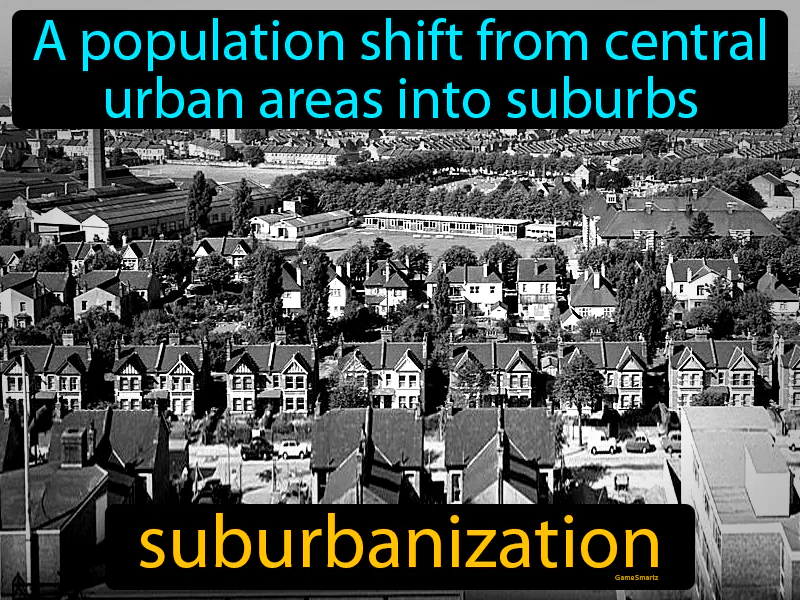Suburbanization
Suburbanization: Easy to understand
During the Cold War era, suburbanization in the United States was driven by a desire for more space, affordable housing, and a sense of safety away from potential urban targets in a nuclear conflict. This movement was also fueled by the availability of the GI Bill for returning veterans, which made homeownership more accessible. Suburbanization was important because it helped to shape American culture and economy, promoting car ownership and the development of highways. Today, suburbanization remains relevant as it affects daily commutes, urban planning, and environmental concerns due to increased reliance on cars. For example, someone living in a suburb might have to drive longer distances to work in the city, impacting their time, expenses, and carbon footprint.

Practice Version

Suburbanization: A population shift from central urban areas into suburbs. Suburbanization. Suburbanization is the process during which people move from cities to live in surrounding residential areas, which grew significantly in the U.S. after World War II.